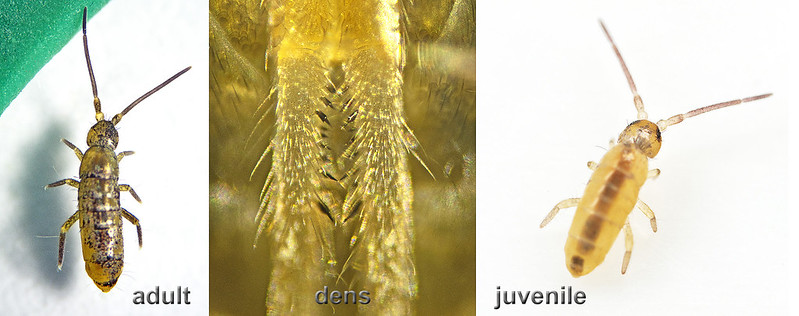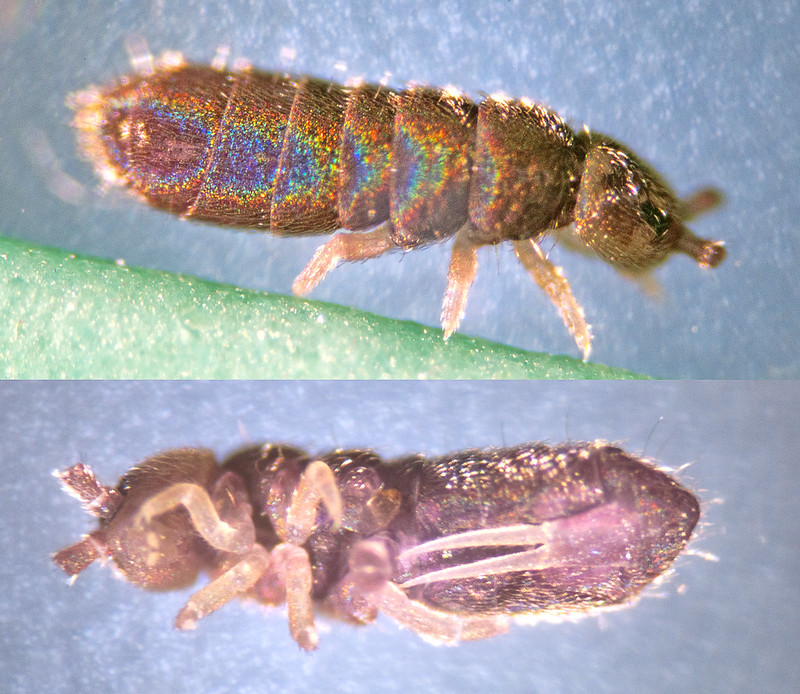Cloud Wood represents one of very few opportunities to get onto Carboniferous limestone in Leicestershire and is therefore of interest. Sadly, much of the former woodland has been removed by quarrying. I sampled leaf litter from two sites, starting near the edge of the quarried area. This was dominated by deep Oak litter, but also had many decaying Birch logs on the ground and on the logs, many large, dark springtails. These turned out to be Dicyrtomina saundersi - seemingly completely dominating the area. I've never seen as many springtails out in the open before, although I've heard several other reports of fences and gates with many D. saundersi on them from this period. A few years ago Peter Shaw commented on the seemingly unstoppable rise of Dicyrtomina saundersi - and there's no reason to believe that it's over:

(Shaw, P., et al (2013) Updating taxonomic biogeography in the light of new methods–examples from Collembola. Soil Organisms, 85(3), 161-170).
The only other springtails I found in this litter sample were also of interest - good numbers of Tomocerus minor as part of a young population with many juveniles. This was interesting because these were the first Tomiocerids I have recorded anywhere since 21.10.18!

I also sampled leaf litter from the other end of the site (a mixture of Sycamore, Oak and other species). This also turned up Dicyrtomina saundersi and Tomocerus minor, but in addition a good number of isotomids, some of which I tentatively identified as Desoria tigrina and Isotomurus unifasciatus, and definitely plenty of Vertagopus arboreus:

Dear Alan This is nicely done, congratulations! That is such a pretty rainbow Vertagopus. Best Peter
ReplyDelete